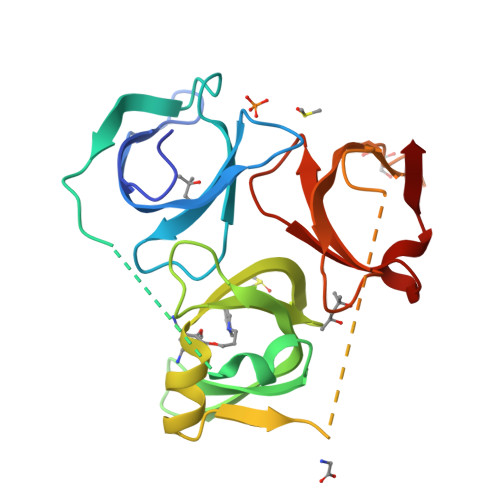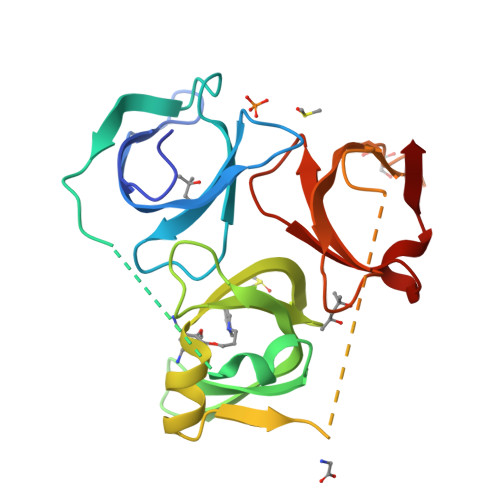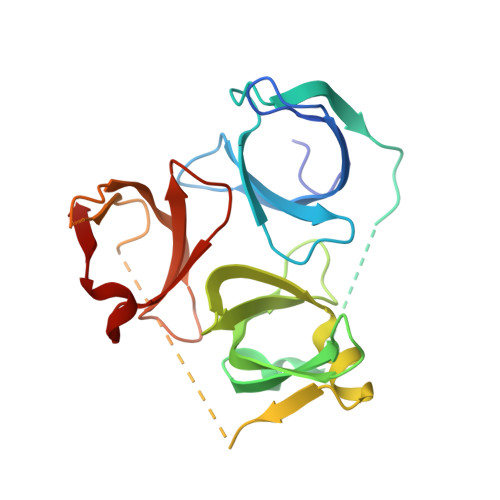Discovery of a Potent and Selective Fragment-like Inhibitor of Methyllysine Reader Protein Spindlin 1 (SPIN1).
Xiong, Y., Greschik, H., Johansson, C., Seifert, L., Bacher, J., Park, K.S., Babault, N., Martini, M., Fagan, V., Li, F., Chau, I., Christott, T., Dilworth, D., Barsyte-Lovejoy, D., Vedadi, M., Arrowsmith, C.H., Brennan, P., Fedorov, O., Jung, M., Farnie, G., Liu, J., Oppermann, U., Schule, R., Jin, J.(2019) J Med Chem 62: 8996-9007
- PubMed: 31260300
- DOI: https://doi.org/10.1021/acs.jmedchem.9b00522
- Primary Citation of Related Structures:
6QPL - PubMed Abstract:
By screening an epigenetic compound library, we identified that UNC0638, a highly potent inhibitor of the histone methyltransferases G9a and GLP, was a weak inhibitor of SPIN1 (spindlin 1), a methyllysine reader protein. Our optimization of this weak hit resulted in the discovery of a potent, selective, and cell-active SPIN1 inhibitor, compound 3 (MS31). Compound 3 potently inhibited binding of trimethyllysine-containing peptides to SPIN1, displayed high binding affinity, was highly selective for SPIN1 over other epigenetic readers and writers, directly engaged SPIN1 in cells, and was not toxic to nontumorigenic cells. The crystal structure of the SPIN1-compound 3 complex indicated that it selectively binds tudor domain II of SPIN1. We also designed a structurally similar but inactive compound 4 (MS31N) as a negative control. Our results have demonstrated for the first time that potent, selective, and cell-active fragment-like inhibitors can be generated by targeting a single tudor domain.
Organizational Affiliation:
Mount Sinai Center for Therapeutics Discovery, Departments of Pharmacological Sciences and Oncological Sciences, Tisch Cancer Institute , Icahn School of Medicine at Mount Sinai , New York , New York 10029 , United States.






















